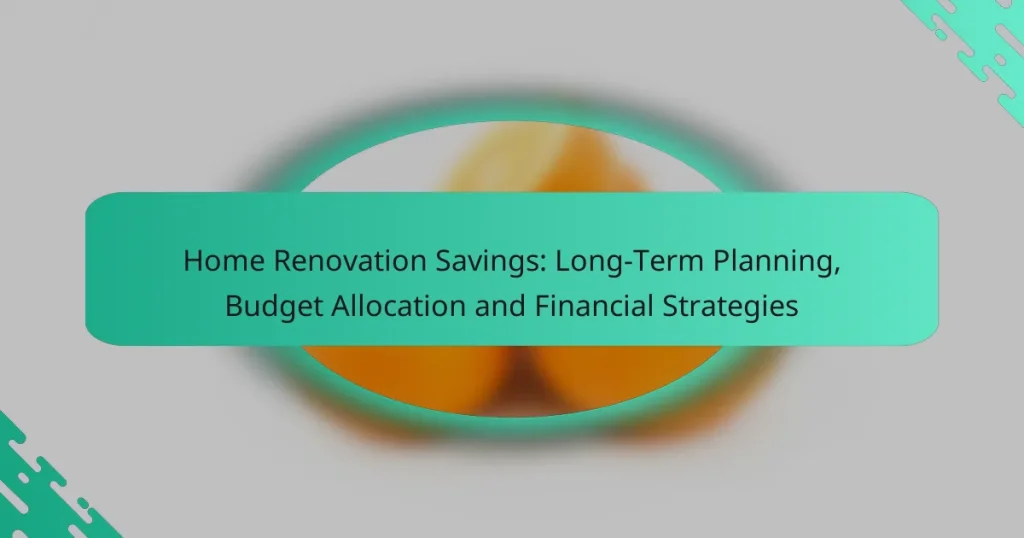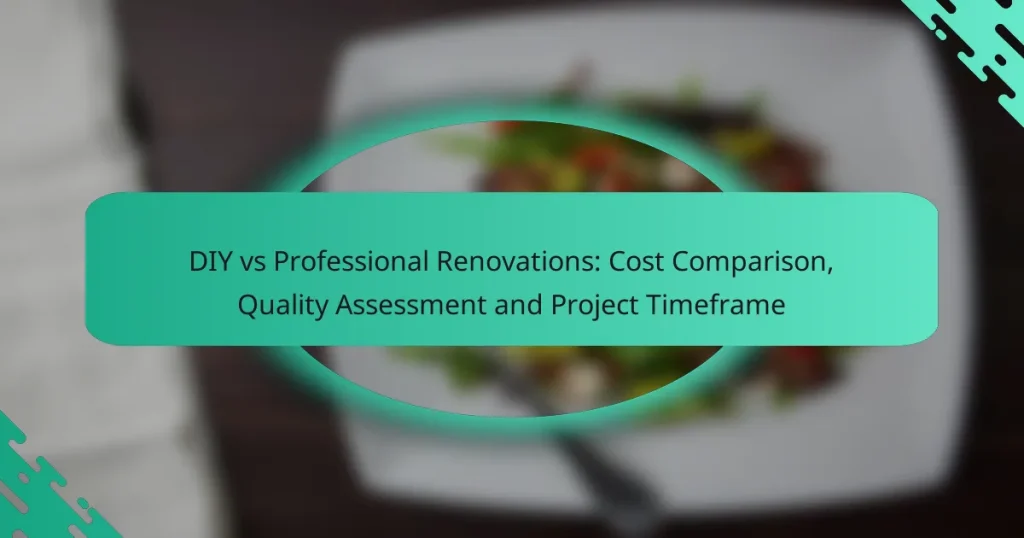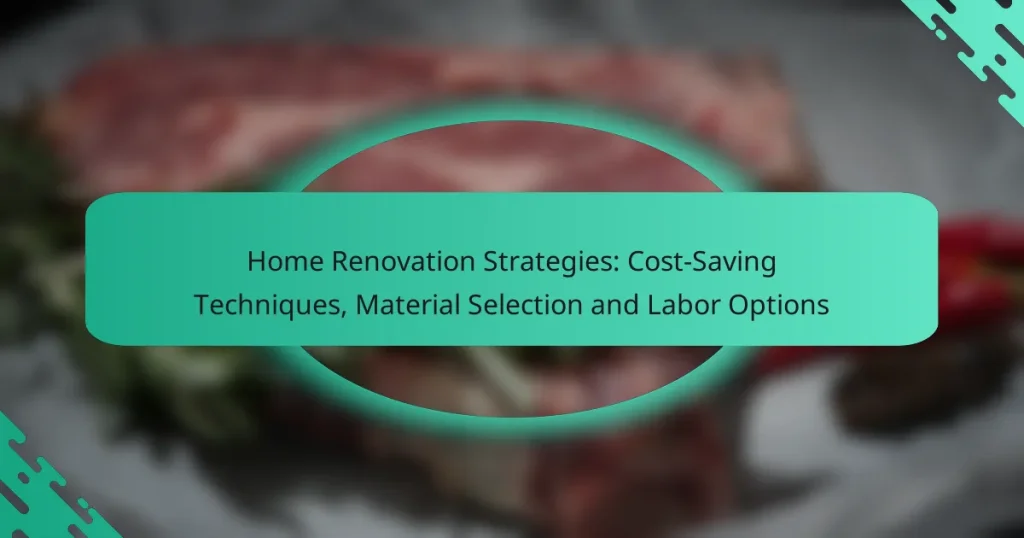Home improvement projects can be both cost-effective and rewarding, especially when homeowners prioritize energy-efficient materials and local contractors. By focusing on renovations that enhance functionality and aesthetics, such as kitchen and bathroom upgrades, it’s possible to maximize value while keeping expenses low. Additionally, understanding the impact of location on renovation costs can help in effective budget planning.
Home Maintenance Budgeting: Seasonal Planning, Cost Management and Improvement Priorities
Home Improvement ROI: Investment Analysis, Value Assessment and Market Trends
Home Improvement Budget: Realistic Planning, Cost Estimation and Project Scope
Home Services Cost Transparency: Pricing Clarity, Service Quality and Customer Trust
DIY vs Professional Renovations: Cost Comparison, Quality Assessment and Project Timeframe
Home Renovation Strategies: Cost-Saving Techniques, Material Selection and Labor Options
How can homeowners in Los Angeles save on renovation costs?
Homeowners in Los Angeles can save on renovation costs by focusing on energy-efficient materials, hiring local contractors, and implementing DIY projects. These strategies not only reduce expenses but also enhance the overall value and sustainability of the home.
Utilizing energy-efficient materials
Choosing energy-efficient materials can significantly lower utility bills and improve comfort. Options like insulated windows, Energy Star-rated appliances, and sustainable flooring can reduce energy consumption and qualify for rebates or tax incentives.
When selecting materials, consider the long-term savings versus initial costs. For example, while LED lighting may have a higher upfront cost, it can save homeowners a substantial amount on electricity over time.
Hiring local contractors for competitive pricing
Hiring local contractors can lead to better pricing and quicker project completion. Local professionals often have established relationships with suppliers, which can result in discounts on materials and services.
It’s advisable to obtain multiple quotes from different contractors to ensure competitive pricing. Look for reviews and ask for references to gauge their reliability and quality of work.
Implementing DIY projects
Homeowners can save significantly by taking on DIY projects, especially for tasks like painting, landscaping, or minor repairs. This approach not only cuts labor costs but also allows homeowners to personalize their space.
However, it’s essential to assess your skills and the complexity of the project. For intricate tasks like electrical or plumbing work, hiring a professional may be more cost-effective in the long run to avoid costly mistakes.
What are the most cost-effective home improvement projects?
Cost-effective home improvement projects typically focus on enhancing functionality and aesthetics without significant financial investment. Prioritizing upgrades that offer high returns on investment, such as kitchen and bathroom renovations, can maximize value while minimizing expenses.
Kitchen remodels with budget-friendly upgrades
Kitchen remodels can be achieved affordably by focusing on strategic upgrades rather than complete overhauls. Consider repainting cabinets instead of replacing them, which can refresh the space at a fraction of the cost. Adding new hardware or updating the backsplash with peel-and-stick tiles can also create a modern look without breaking the bank.
When planning a budget-friendly kitchen remodel, aim for a total cost in the low thousands of USD. Prioritize essential updates like energy-efficient appliances, which can save on utility bills over time. Avoid high-end materials that can quickly inflate your budget.
Bathroom renovations with affordable fixtures
Bathroom renovations can be economical by selecting affordable fixtures and finishes. Replacing old faucets and showerheads with water-efficient models can enhance functionality while reducing water usage. Simple updates like new lighting or a fresh coat of paint can dramatically improve the space without significant expense.
For a cost-effective bathroom renovation, consider budgeting around a few thousand USD. Focus on essential upgrades, such as replacing the vanity or adding storage solutions, to maximize space and usability. Always compare prices from different suppliers to find the best deals on fixtures and materials.
How does location affect home improvement costs?
Location significantly influences home improvement costs due to variations in labor rates, material availability, and local regulations. Urban areas typically have higher expenses compared to rural regions, impacting budget planning for renovations.
Labor costs in urban vs. rural areas
Labor costs can vary greatly between urban and rural areas. In cities, skilled labor may command higher wages due to demand and living costs, often ranging from 20% to 50% more than in rural settings. This can lead to significant differences in overall project expenses.
When planning a home improvement project, consider the labor market in your area. Hiring contractors from nearby rural areas may save money, but ensure they have the necessary experience and qualifications for your specific project.
Material availability in different regions
Material availability can differ based on geographic location, affecting both cost and project timelines. Urban areas often have easier access to a wider variety of materials, which can lead to competitive pricing and quicker delivery times. Conversely, rural areas may face limited options, potentially increasing costs and delays.
When sourcing materials, research local suppliers and consider the costs of shipping if you need to order from distant vendors. Always compare prices and availability to make informed decisions that align with your budget and timeline.
What financing options are available for home improvements?
Home improvement financing options include home equity loans and personal loans for renovations. Each option has its own advantages and considerations, making it essential to evaluate your financial situation and project needs before deciding.
Home equity loans
Home equity loans allow homeowners to borrow against the equity built up in their property. Typically, these loans offer lower interest rates compared to personal loans, as they are secured by the home itself. Borrowers can usually access a percentage of their home’s value, often ranging from 70% to 85% of the equity.
When considering a home equity loan, it’s important to factor in closing costs and fees, which can vary significantly. Additionally, ensure you can comfortably manage the monthly payments, as failure to repay could lead to foreclosure.
Personal loans for renovations
Personal loans for renovations are unsecured loans that do not require collateral, making them accessible for those without significant home equity. These loans typically have higher interest rates than home equity loans, but they can be processed quickly, often within a few days.
When opting for a personal loan, compare offers from various lenders to find the best interest rates and terms. Be mindful of your credit score, as it can significantly impact your eligibility and the rates you receive. Aim to borrow only what you need to avoid unnecessary debt.
What are the common pitfalls in budgeting for home improvements?
Common pitfalls in budgeting for home improvements include underestimating material costs and ignoring permit fees. These oversights can lead to significant financial strain and project delays if not properly accounted for in the initial budget.
Underestimating material costs
One of the most frequent mistakes homeowners make is underestimating the costs of materials needed for renovations. Prices for materials can fluctuate based on market conditions, availability, and quality. It’s wise to research current prices and consider a buffer of 10-20% above estimated costs to accommodate unexpected price increases.
Additionally, homeowners should factor in the costs of delivery and any additional supplies, such as tools or protective gear. Creating a detailed list of all required materials and comparing prices from multiple suppliers can help ensure a more accurate budget.
Ignoring permit fees
Many home improvement projects require permits, which can add unexpected costs to your budget. Permit fees vary widely depending on the type of work being done and local regulations, often ranging from a few dozen to several hundred dollars. Failing to secure necessary permits can lead to fines or the need to redo work, further inflating costs.
Before starting a project, check with local building authorities to understand which permits are required and their associated fees. Incorporating these costs into your initial budget can prevent unpleasant surprises down the line.
How can homeowners assess the ROI of their improvements?
Homeowners can assess the return on investment (ROI) of their home improvements by analyzing the increase in property value and the long-term savings generated from energy-efficient upgrades. Key factors to consider include the initial costs, potential market trends, and the longevity of the improvements.
Comparing property values before and after
To evaluate the ROI from property value changes, homeowners should compare the market value of their home before and after improvements. This can be done by consulting real estate agents or using online valuation tools to estimate current market trends.
For example, kitchen remodels often yield a higher ROI, sometimes exceeding 70%, while bathroom upgrades can also significantly boost property value. Homeowners should keep in mind that local market conditions can greatly influence these figures.
Evaluating energy savings over time
Assessing energy savings involves calculating the reduction in utility bills after implementing energy-efficient upgrades. Homeowners can track their monthly energy expenses before and after improvements to determine the financial impact.
For instance, installing energy-efficient windows or insulation can lead to savings of 10-30% on heating and cooling costs. Homeowners should also consider any available tax credits or rebates for energy-efficient upgrades, which can further enhance overall savings.
What are the benefits of energy-efficient upgrades?
Energy-efficient upgrades provide significant advantages, including reduced energy consumption and lower utility costs. These improvements not only enhance comfort but also contribute to environmental sustainability.
Lower utility bills
One of the primary benefits of energy-efficient upgrades is the reduction in utility bills. By implementing measures such as better insulation, energy-efficient windows, and high-efficiency appliances, homeowners can see a decrease in their monthly energy expenses, often by 20-30% or more.
To maximize savings, consider conducting an energy audit to identify areas where improvements can be made. Simple upgrades like sealing leaks and installing programmable thermostats can yield immediate financial benefits.
Increased home value
Energy-efficient upgrades can significantly increase the value of a home. Potential buyers are often willing to pay a premium for homes with modern, energy-efficient features, as these upgrades promise lower operating costs and enhanced comfort.
According to various studies, energy-efficient homes can sell for 5-15% more than comparable homes without such features. Key upgrades to consider include Energy Star-rated appliances, solar panels, and advanced heating and cooling systems, which can all make your property more attractive in the real estate market.






